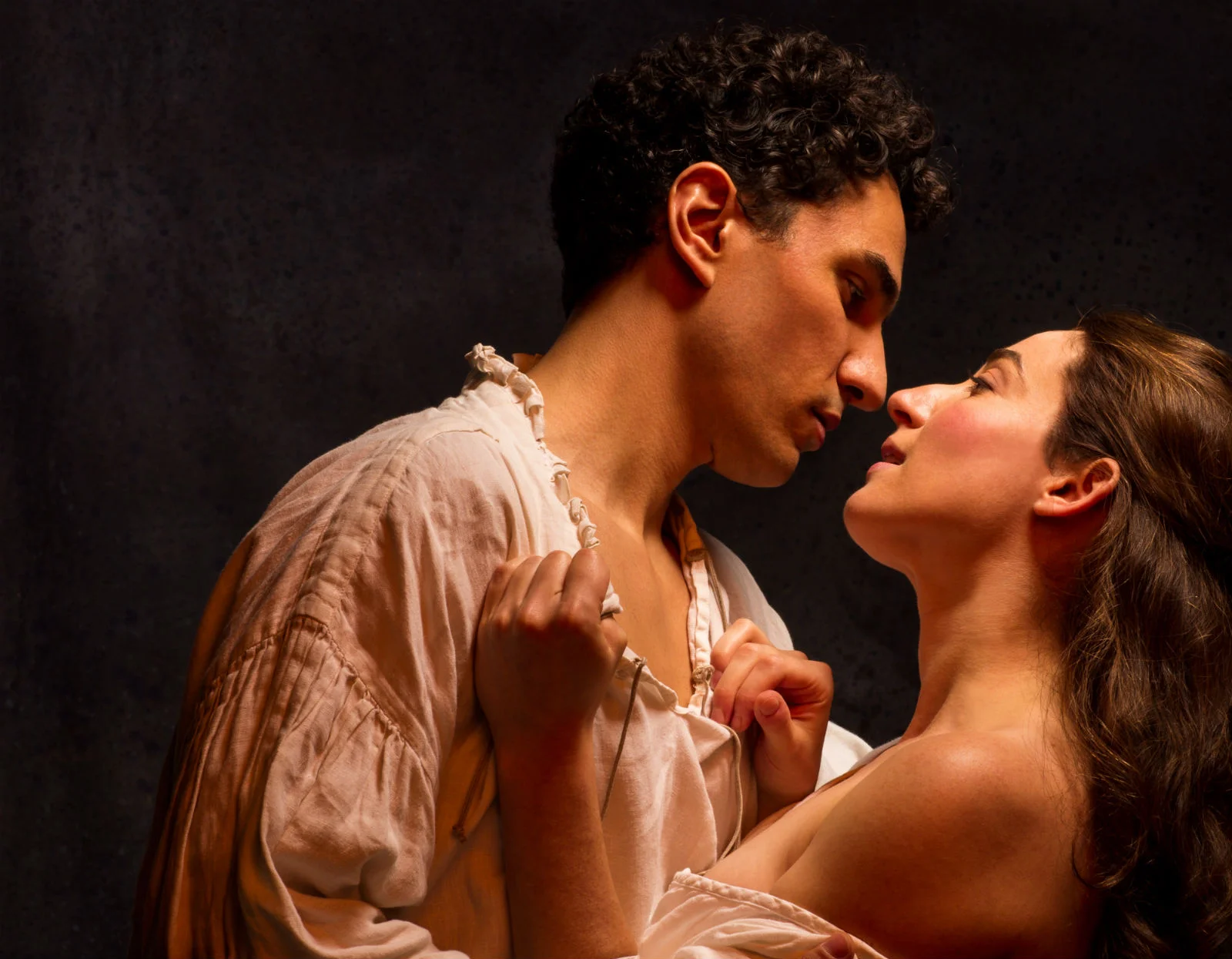Romeo and Juliet: Stratford Production Finds Sweet Spot in Oft-Told Tale
By Liam Lacey
Rating: A-
Shakespeare's Romeo and Juliet is often treated as modelling clay for directors to shape up as they want. There's West Side Story, of course, with New York street gangs. I once saw a production set on the Trans-Canada Highway reflecting French-English relations. And then there's Brazil’s Grupo Galpao’s 2012 production, as described in this review in The Guardian:
"Mercutio is a red-nosed clown who clutches at his crotch every time Romeo tries to speak earnestly of love... "
While it sounds fun, the reviewer chastised it for "failing to achieve the seriousness of tone that might provoke emotional resonance."
There were no such problems with Stratford's production of Romeo and Juliet last summer, a play which was widely praised by reviewers for its stage execution and themes of toxic violence and misogyny. Which are the kinds of things you can usually find without looking too hard. Mostly, the filmed version of the Stratford production finds the sweet spot between too much reverence or relevance, without too much thematic torqueing.
Antoine Yared and Sara Farb as history's most doomed couple this side of J-Rod.
The film, which shows in theatres on March 3, is the ninth in a series as part of an ambitious project to film 38 Shakespeare plays over a decade. Under the supervision of producer-director Barry Avrich, the play was shot before a live audience with 10 cameras, supplemented with some pick-ups after the performance, and edited into a whole. Neither stage-bound nor swooping about, the cameras simulate the experience of moving about the theatre catching the performance from different points of view.
The transition isn’t perfect. Sometimes, what works in the quasi-ritualistic theatre space is flatly literal on screen. The coffins on the stage at play's start, for example, made me aware that someone was trying to make a point. The recorded off-stage hubbub of Capulet and Montague quarrels only underlined what the Chorus (Sarah Dodd) says in the prelude — that this is an ancient quarrel.
I had mixed reaction to the trio of black-clad, white-hatted women identified in the credits as The Widows, standing for mourners (or perhaps The Fates) because they kept showing up on grim occasions, carrying lanterns in baskets, which looked more nightmarish onstage than it does on film. There was no good reason for the apothecary in Act V to be wearing a bird's head mask, like one of the orgiasts in Stanley Kubrick's Eyes Wide Shut. Upon meeting him, Romeo confines his observation to "Come hither man. I see thou art poor," rather than, say, "I see thou art poor and also feather-brained."
Here's the good news: none of that matters. What’s important is that the pacing is quick, the transitions seamless, and the performances strong, and honest to the text. As played by Evan Buliung, Mercutio’s bawdy humour has a jock's aggressive edge and his Queen Mab speech feels like a rapper's swagger. Seana McKenna's' unfiltered motor-mouth of a nurse is your sassy aunt after too many cocktails. Romeo (Antoine Yared) is less a romantic figure than a moody, struggling youth who has a bad habit of killing people when he gets upset. Sara Farb's Juliet, though obviously not the 13-year-old of the text, has a shoulder-back directness, and an impressive care with her delivery that makes the most familiar lines fresh.
There's also an overall confidence with the Stratford repertory company, something you can't count on in those occasional Shakespeare movies. It turns out that actors who train in speaking Shakespeare do it the best; clear delivery is key to holding your attention. One scholar has counted 175 examples of puns or wordplay in Romeo and Juliet, which works out to more than one crack a minute of the roughly two- and-a-half hour running time. Amazing how much the experience improves when the actors comprehend what they’re saying. (The film actually runs around three hours, including an introduction by former Stratford actor Eric McCormack of Will & Grace, and an intermission with a backstage tour by Stratford's artistic director, Antoni Cimolino.)
One more thing about the language: An old English professor of mine speculated that Romeo and Juliet, which was one of Shakespeare's earliest plays, was the work of a young literary show-off, making his transition from poet to playwright. He took a hand-me-down story and displayed some of the things he could do with it. This is where I think the Stratford production works best — enjoying the language, rather than trying to get through it.
There's no better example of that than the first meeting of Romeo and Juliet, not just young lovers but two poets who count on their fingers syllables of the sonnet they're constructing together as they fall in love. The characters love with words, fight with words, reproach, incite and lament with words. Words, in a real sense, are the stars of the play.
Romeo and Juliet. Written by William Shakespeare. Directed by Barry Avrich for film. Directed by Scott Wentworth for the stage. With Sara Farb (Juliet), Antoine Yared (Romeo) Seana McKenna (Nurse), Marion Adler (Lady Capulet), Wayne Best (Friar Laurence), Evan Buliung (Mercutio) and Randy Hughson (Capulet). Romeo and Juliet shows at the Cineplex Empress Walk and the Cineplex Yonge-Eglinton, as well as Cineplex Theatres across Canada.

